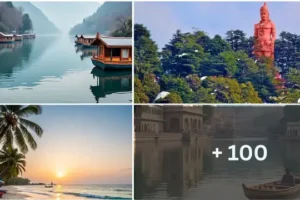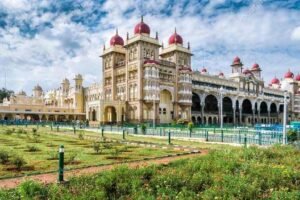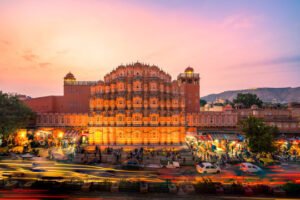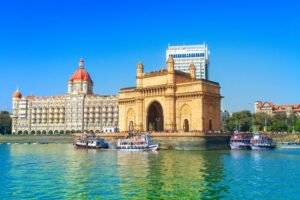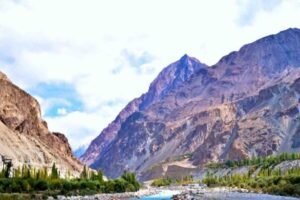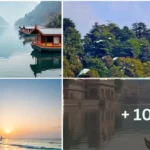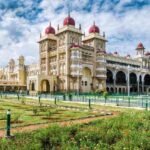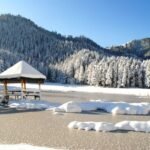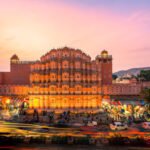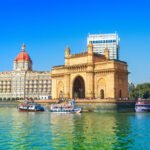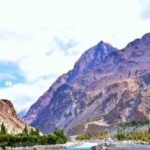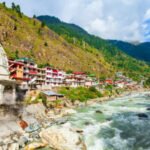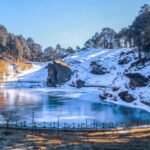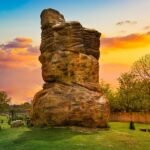#1 Key Monastery, The Buddhist Cultural Marvel in Spiti Valley
Key Monastery Spiti, The Buddhist Cultural Marvel In Spiti Valley: The Key Monastery, also spelled Ki, Kee, or Kye Gompa, is a Tibetan Buddhist monastery located in the Spiti Valley of Himachal Pradesh, India. It is the largest monastery in the valley . Perched on top of a hill at an altitude of 4,166 meters (13,668 ft) above sea level, it offers stunning views of the Spiti River and the surrounding mountains.
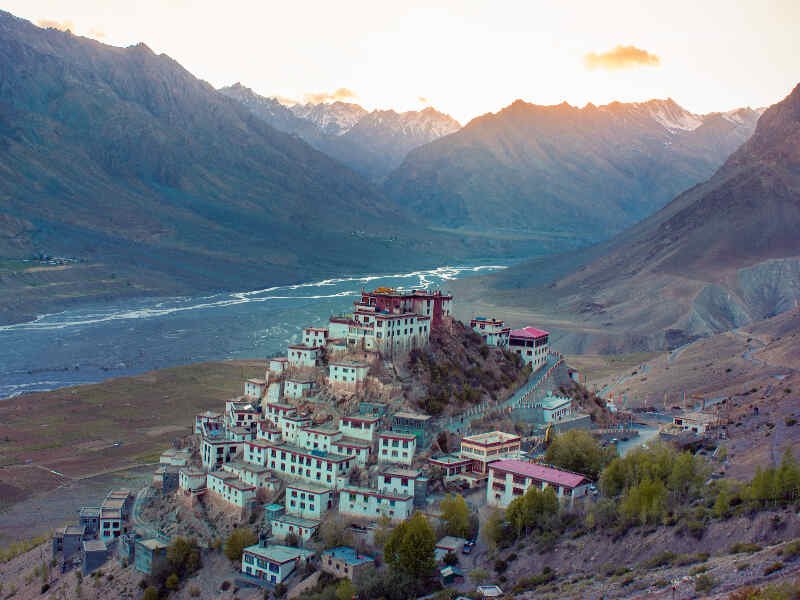
Key Monastery Spiti:-
The monastery is dedicated to Lochen Tulku, the 24th reincarnation of the great translator Lotsawa Rinchen Zangpo. It is about 12 km north of Kaza and 210 km from Manali by road. The monastery is an irregular heap of low rooms and narrow corridors built on a monolithic conical hill. From a distance, it resembles the Thiksey Monastery near Leh in Ladakh. The irregular prayer chambers are interconnected by dark passages, tortuous staircases, and small doors. Hundreds of lamas receive their religious training in the monastery.
The Key Monastery boasts several specialties:
- Largest Monastery in Spiti Valley: Key Monastery holds the title of the biggest monastery in Spiti Valley. This translates to it being a prominent Buddhist learning center with numerous resident lamas engaged in religious studies.
- Architectural Marvel: The monastery’s architecture is a fascinating blend of Indian and Tibetan styles, showcasing its unique heritage. The 14th-century monastic construction reflects Chinese influences, with walls adorned with murals and paintings.
- Treasure Trove of Buddhist Art: Step inside Key Monastery to discover a treasure trove of Buddhist art. The walls are decorated with exquisite murals depicting religious themes. The collection also includes precious thangkas ( Tibetan scroll paintings), ancient manuscripts, and captivating stucco images.
- Peaceful Ambiance and Breathtaking Views: The monastery offers a haven of peace and tranquility, ideal for spiritual seekers and nature lovers alike. Its serene atmosphere is accentuated by the stunning vistas of the Spiti Valley and the majestic Himalayas that surround it.
- Rich in History: Key Monastery boasts a long and intriguing history, though not without its share of challenges. Despite facing destruction by fire and earthquakes, the monastery has been meticulously restored and remains a significant cultural and spiritual landmark.
Huge Cultural Influence in Spiti Valley
The cultural influence of Key Monastery stems from its role as a prominent center for Tibetan Buddhism and its unique architectural style:
- Preserving Tibetan Buddhist Traditions: The monastery serves as a vital center for learning and practicing the Gelugpa school of Tibetan Buddhism. Hundreds of monks reside here, upholding centuries-old traditions through daily rituals, prayer ceremonies, and teachings. This has helped preserve and transmit Tibetan Buddhist practices to future generations.
- Architectural Fusion: The architectural style of Key Monastery is a fascinating blend of Tibetan, Indian, and even Mongolian influences. The multi-storied layout with a fort-like structure reflects Tibetan design principles. Meanwhile, the whitewashed walls with red trim incorporate elements of Indian architecture. This unique style has influenced the aesthetics of other monasteries in the region.
- Symbol of Spiti Valley Culture: Key Monastery’s imposing presence on the Spiti Valley landscape makes it a landmark and a cultural symbol. Tourists flock to witness its beauty, fostering appreciation for the region’s rich heritage and traditions. The daily life and rituals of the monks also provide a glimpse into the Spiti Valley’s unique cultural identity.
Reaching Key Monastery requires a journey to Kaza, the main town in Spiti Valley. Here’s how to get there:
1. Reach Kaza:
There are two main routes to reach Kaza, depending on the time of year and your preference:
Manali – Kaza route (shorter distance):This route is open from late May to mid-October. The distance from Manali to Kaza is about 200 kilometers, but be prepared for a long journey (8-9 hours) due to high mountain passes and rough roads. A permit is required to cross Rohtang Pass.
Shimla – Kaza route (longer distance): While this route is longer (around 425 kilometers) and takes at least 2 days to complete, it’s generally open year-round except for occasional closures due to heavy snowfall during peak winter.
You can choose to travel by public bus or taxi. Be sure to book your transportation well in advance, especially during peak tourist season.
2. Reach Key Monastery from Kaza:
The Key Monastery is located about 14 kilometers from Kaza. There are no public buses that go directly to the monastery, so you’ll need to hire a taxi or jeep for this leg of the journey. The ride takes about 40 minutes and climbs a steep and challenging road.
Here are some things to keep in mind when planning your trip to Key Monastery:
- Altitude Sickness: Be aware of altitude sickness as Key Monastery is located at a high altitude (over 4,000 meters). It’s recommended to spend a few days acclimatizing in Kaza before visiting the monastery.
- Permits: Depending on your nationality, you may require special permits to enter Spiti Valley. Check with the Indian government for current requirements.
- Best Time to Visit: The Spiti Valley experiences extreme weather conditions. The summer months (June to September) are generally considered the best time to visit, with pleasant weather and clear skies. However, roads may be blocked due to monsoon rains in July and August.
Here are some things you can do while visiting Key Monastery:
- Explore the Monastery: The highlight of any visit to Key Monastery is exploring the monastery complex itself. The labyrinthine corridors wind through the numerous chambers, each one offering a glimpse into the lives of the monks and the rich history of the place. Be sure to admire the beautiful murals and thangkas (painted scrolls) that adorn the walls, depicting Buddhist deities and stories.

- Witness the Stunning Views: The location of Key Monastery at the top of a hill affords breathtaking panoramic views of the Spiti Valley below. Take some time to soak in the beauty of the snow-capped peaks, the meandering Spiti River, and the scattered villages dotting the landscape.
- Attend a Prayer Ceremony: If you’re fortunate enough to visit during a prayer ceremony, it’s a truly special experience. Observe the monks chanting in unison, the rhythmic beating of drums, and the overall sense of peace and tranquility.
- Interact with the Monks: If you have the opportunity, strike up a conversation with the monks. They are typically friendly and welcoming visitors, and you can learn more about their way of life and the monastery’s traditions.
Visit nearby attractions: After exploring Key Monastery, you can visit some other interesting attractions in the vicinity. These include:
- Kibber Village: The highest village in India, Kibber Village is located just a few kilometers from Key Monastery. Here, you can experience the unique lifestyle of the local people and witness some stunning mountain views.

- Langza Village: Also known as the “Fossil Village”, Langza is famous for the abundance of marine fossils found in the area. You can even try your hand at fossil hunting!

- Dhankar Monastery: Perched precariously on a clifftop, Dhankar Monastery offers stunning views and a unique glimpse into monastic life.
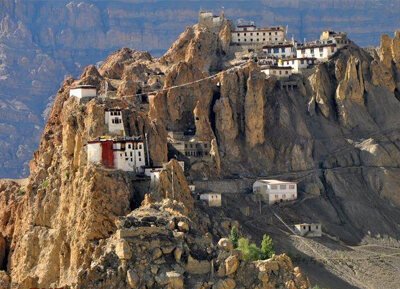
The best time to visit Key Monastery depends on what you prioritize for your trip:
- Pleasant weather and comfortable exploration: The summer months, from June to September, offer the most comfortable weather conditions for exploring the monastery and the surrounding Spiti Valley. Temperatures are mild, and skies are generally clear. This is also the peak tourist season, so expect crowds, especially during festivals.
If you're interested in experiencing a local festival, plan your trip around the Cham Festival, which is usually held in July. This vibrant festival features masked dances, colorful costumes, and traditional music.
- Fewer crowds and a chance to witness snowfall: If you prefer a quieter experience and don’t mind colder weather, you can visit Key Monastery in October or November. Just be aware that there’s a higher chance of encountering snowfall during these months, which could potentially block roads.
Here are some additional factors to consider when planning your trip:
- Accessibility: The Spiti Valley experiences extreme weather conditions. The roads leading to Kaza, the main town in the valley, are typically closed from December to March due to heavy snowfall. Even during the summer months, landslides due to monsoon rains can sometimes block roads.
- Altitude Sickness: Key Monastery is located at a high altitude (over 4,000 meters). Be sure to spend a few days acclimatizing in Kaza before visiting the monastery to avoid altitude sickness.
“No matter when you choose to visit, Key Monastery is sure to be a memorable experience.”
Mayank Sharma
Peaceful and serene ambiance perfect for meditation and reflection that’s the place we call Key Monastery.
